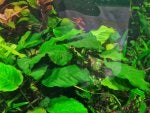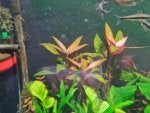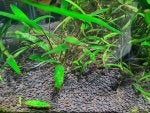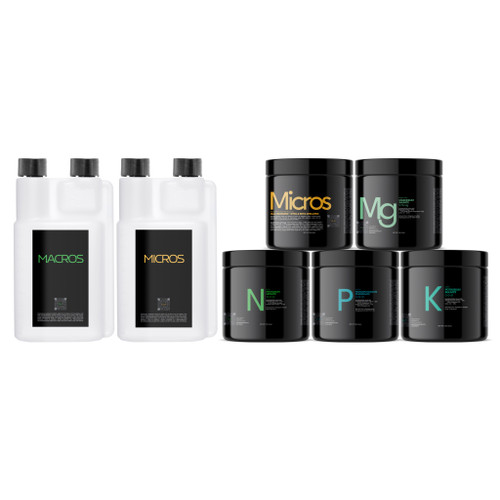I've been battling with algae for a looooooong time, I've manage to keep the threaded algae under control with otocinclus, siamese alga eater and mollies but I'm still struggling with those algae that appear and sticks to old leaves, new leaves are flawless but old ones look horrendous totally covered by algae. The water (green water algae) is not that bad, was better when I had a chihiros but it died so I don't have it anymore, same from my UV filter.
Here is the videos and images of my tank
2 Radion G4 for Planted tank
7:00 AM to 8:00 AM - Ramp from 0% to [(40% Blue + 10% Cool White) at 50%]
9:00 AM to 4:30 PM - (40% Blue + 24% Cool White + 24% Warm White +24% Green + 24% Red) at 60%
4:30 PM to 6:45 PM - Ramp down from (44% blue + 12% Cool White) at 50% to 28% blue at 30%
6:45 PM to 8:30 PM - 28% blue at 30%
8:30 PM to 9:00 PM - Ramp down from 28% blue at 30% to 0%
- Substrate.
Fluval Stratum at top + Black Volcanic Sand at bottom with Seachem Flourish Tabs
- Co2 dosing or Non-dosing.
Injected Co2 From 7 AM to 7:30 PM about 3 bps
Metricide 28 about 5ml (4 times a day)
- Fertilizers used + Ratios.
PPS Pro 2 ml macros daily
CSM+B 0.7 ml micros daily
- Water change regime and type.
5% to 15% about 5 times a week
40% 3 times a month
- Plant list + When planted.
3 years ago when initiated
1 Anubia Nana
4 Java Fern
3 or 4 Vallisneria Spirallis
Few CRYPTOCORYNE WILLISSII
1 ANUBIAS BARTERI
Some Rotalas and some other red plants, see pictures/video
10. Inhabitants.
About 30 little fishes including 3 siamese alga eater, 5 otocinclus
Here is the videos and images of my tank
- Size of tank 75 Gallons.
- Runing for about 2 or 3 years.
- Filtration: Fluval FX4 Canister (24 hours) + MarineLand Magnum (12 hours daily as polisher).
- Lighting and duration.
2 Radion G4 for Planted tank
7:00 AM to 8:00 AM - Ramp from 0% to [(40% Blue + 10% Cool White) at 50%]
9:00 AM to 4:30 PM - (40% Blue + 24% Cool White + 24% Warm White +24% Green + 24% Red) at 60%
4:30 PM to 6:45 PM - Ramp down from (44% blue + 12% Cool White) at 50% to 28% blue at 30%
6:45 PM to 8:30 PM - 28% blue at 30%
8:30 PM to 9:00 PM - Ramp down from 28% blue at 30% to 0%
- Substrate.
Fluval Stratum at top + Black Volcanic Sand at bottom with Seachem Flourish Tabs
- Co2 dosing or Non-dosing.
Injected Co2 From 7 AM to 7:30 PM about 3 bps
Metricide 28 about 5ml (4 times a day)
- Fertilizers used + Ratios.
PPS Pro 2 ml macros daily
CSM+B 0.7 ml micros daily
- Water change regime and type.
5% to 15% about 5 times a week
40% 3 times a month
- Plant list + When planted.
3 years ago when initiated
1 Anubia Nana
4 Java Fern
3 or 4 Vallisneria Spirallis
Few CRYPTOCORYNE WILLISSII
1 ANUBIAS BARTERI
Some Rotalas and some other red plants, see pictures/video
10. Inhabitants.
About 30 little fishes including 3 siamese alga eater, 5 otocinclus











